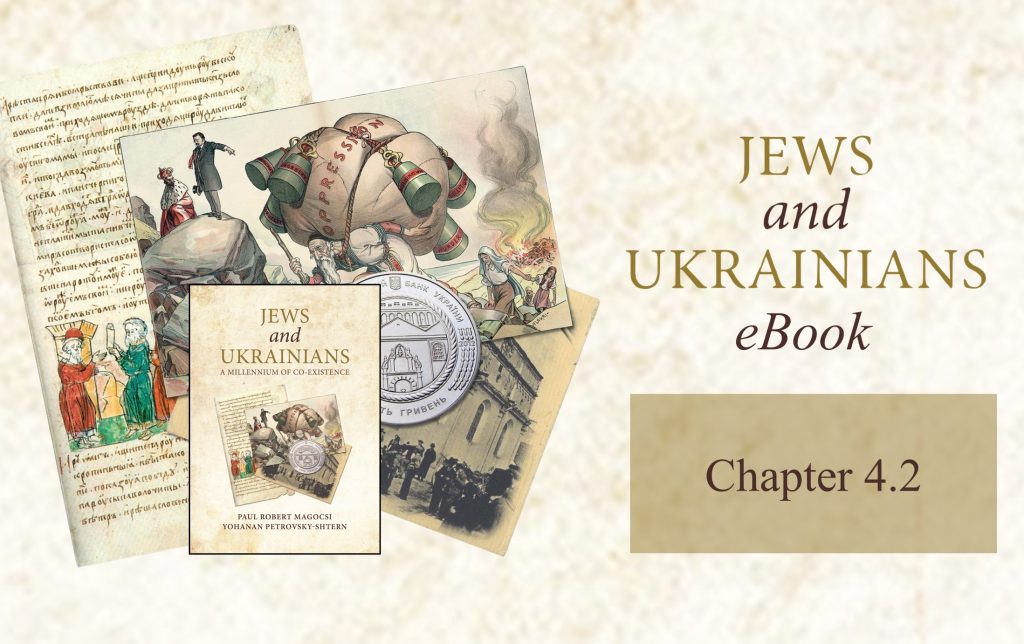Chapter 4.2: "Jews and Ukrainians: A Millennium of Co-Existence"
Jews and Ukrainians: A Millennium of Co-Existence is an award-winning book that explores the relationship between two of Ukraine’s most historically significant peoples over the centuries.
In its second edition, the book tells the story of Ukrainians and Jews in twelve thematic chapters. Among the themes discussed are geography, history, economic life, traditional culture, religion, language and publications, literature and theater, architecture and art, music, the diaspora, and contemporary Ukraine before Russia’s criminal invasion of the country in 2022.
The book addresses many of the distorted stereotypes, misperceptions, and biases that Ukrainians and Jews have had of each other and sheds new light on highly controversial moments of Ukrainian-Jewish relations. It argues that the historical experience in Ukraine not only divided ethnic Ukrainians and Jews but also brought them together.
The narrative is enhanced by 335 full-color illustrations, 29 maps, and several text inserts that explain specific phenomena or address controversial issues.
The volume is co-authored by Paul Robert Magocsi, Chair of Ukrainian Studies at the University of Toronto, and Yohanan Petrovsky-Shtern, Crown Family Professor of Jewish Studies and Professor of History at Northwestern University. The Ukrainian Jewish Encounter sponsored the publication with the support of the Government of Canada.
In keeping with a long literary tradition, UJE will serialize Jews and Ukrainians: A Millennium of Co-Existence over the next several months. Each week, we will present a segment from the book, hoping that readers will learn more about the fascinating land of Ukraine and how ethnic Ukrainians co-existed with their Jewish neighbors. We believe this knowledge will help counter false narratives about Ukraine, fueled by Russian propaganda, that are still too prevalent globally today.
Chapter 4.2
Folk customs among Jews
Jews in Ukraine shared certain beliefs and practices with their Slavic neighbors, particularly with respect to the netherworld. Jews believed that the realms around the town or village were populated by evil spirits such as Lilith (a bisexual spirit specializing in kidnapping), the ruakh (bad spirit) or mazik (evildoer), and, in the case of the soul of an improperly buried person, a dybbuk (literally "cleaving spirit"). These spirits were aggressive: they attacked traveling Jews; they entered Jewish houses through latrines, attics, or backdoors; and they caused spiritual and physical maladies, particularly to grown girls before marriage, to newborn boys before circumcision, and to women in labor. Sometimes these evil spirits took possession of the body of an individual, women mainly, in which case the communal authorities might decide to call upon a practicing Kabbalist (an expert in magic and folk healing) to perform an exorcism.
In order to protect themselves from evil spirits, Jews purchased amulets and charms from Kabbalists (see below, Chapter 5) and from itinerant paramedics who acted as shamans, popular healers, and psychiatrists. Many of these figures drew from Slavic folk beliefs, such as an itinerant Kabbalist active in Podolia and Volhynia in the 1730s who recited incantations in Ukrainian or in Polish and prescribed magical charms based on the healing attributes of herbs.
Practicing Kabbalists as well as their clientele — who ranged from Ukrainian peasants to wealthy Jews to Polish nobles — believed that a piece of rope from the scaffold of a hanged man, dried animal bones, or a rabbit's or raven's brain could be used as a charm for healing or protective purposes. While some Jews mistrusted and ridiculed the Kabbalists, the Jews who revered them placed Kabbalistic amulets on the walls of their homes or carried them on their person when traveling to a distant marketplace. Jews and Gentiles in Ukraine not only shared an interest in magic, they both sought the help of the same Jewish religious figure — the Kabbalist before the 1780s and after that time the Hasidic master (tsadik) — in an effort to ensure the well-being of themselves and their loved ones.
Many, but not all, Jews believed in the afterlife, the transmigration of souls, and the zkhus avos (Heb.: zkhut avot; merits of the forefathers). In case of an approaching calamity — termed a gzeyre (Heb.: gzerah), or "divine decree" — Jews beseeched God to cancel the decree by putting a note into the hand of a recently deceased person. They expected the note to reach the Almighty soon after. They also imposed a communal fast, as the biblical Esther had done during the Persian exile, so that perhaps such an act of piety would prevent the disaster. Jews also went to cemeteries to blow the ram's horn and ask their forefathers to intercede on their behalf before the Almighty.
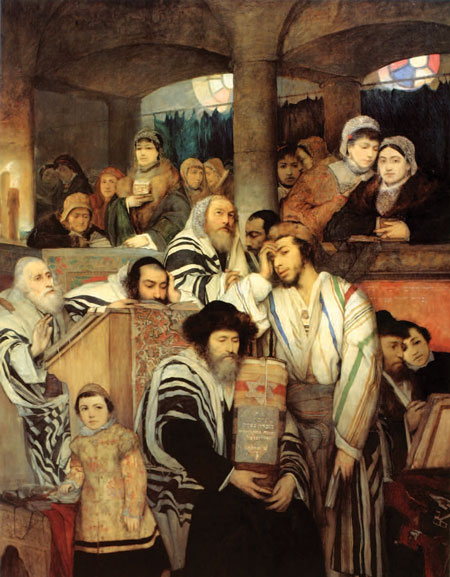
From the seventeenth century, Kabbalistic beliefs found their way into folk traditions, and the early Hasidic mystics who led an ascetic way of life were instrumental in canonizing those ideas. Jews came to believe that the letters of the Hebrew alphabet were invented even before creation. Hence, the alphabet itself contained a unique residue of the creative divine power, something that no other matter possessed and that could be used to help repair the world. If someone was in agony on his or her deathbed, those gathered around read aloud certain lines from the Babylonian Talmud (Mishnah Mikvaot), the first letters of which formed the Hebrew word neshamah, the soul. Both readers and listeners believed that this reading could help the soul of the suffering person to leave the body peacefully.
The Hasidic masters (tsadikim) capitalized on these beliefs, suggesting that Jews should come to them in quest of miracles, learning, and mystical insight. Hasidic folklore from the eighteenth and nineteenth centuries is filled with hundreds of cases of tsadikim curing the sick, the mad, and the barren; creating opportunities for their needy followers; influencing powerful bureaucrats among Russian state officials; and, sometimes, even cancelling evil decrees such as blood libel accusations.
The tsarist regime often labeled Hasidic beliefs and practices as irrational, backward, and harmful, and then used rationalistic arguments of the Enlightenment as a justification to suppress them. For their part, Jewish enlightened reformers (maskilim) praised the anti-mystical and rationalistic approach of the tsarist authorities, viewing it positively as part of their own struggle against the influence of the Hasidic tsadikim upon the gullible and uneducated Jewish masses. The regime did not realize that Hasidic practices reflected the deeply embedded beliefs of hundreds of thousands of Jews (and non-Jews alike), who, far from being mystics, simply shared these beliefs as part of their cultural universe.
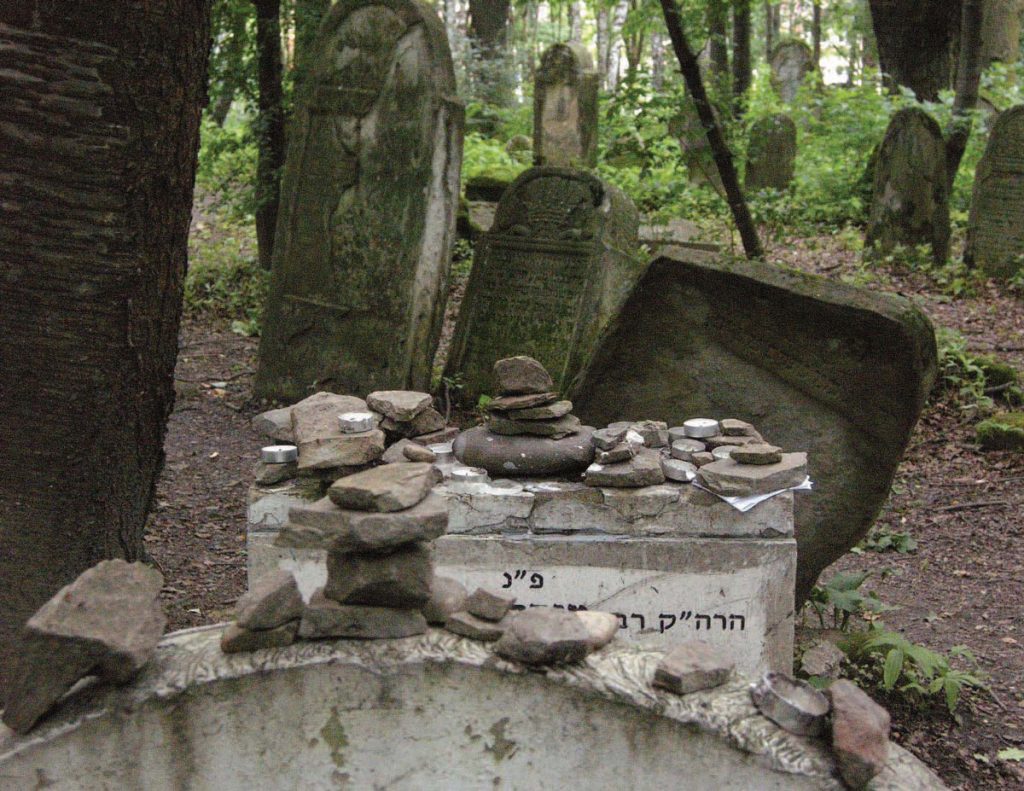
Because of the deeply embedded nature of mystical ideas among Jews in Russian-ruled Ukraine, the persecution of Hasidic masters had the opposite of its intended effect. Jews considered the masters as intercessors before the Almighty, as healers, as spiritual leaders, and as the living embodiment of the Jerusalem Temple. Now the Hasidic masters also came to be seen as martyrs suffering at the hands of an evil Russian imperial regime, thus gaining for themselves an enormous popular following. As for government-imposed restrictions on travel, these prompted the evolution of another phenomenon: pompous and luxurious Hasidic courts not only in Ukrainian towns of the Russian Empire, such as Chornobyl, Ruzhyn, Skvyra, Talno, and Makariv in Kiev province, but also in the relatively more tolerant Austrian Empire, such as Chortkiv in Galicia and Sadhora in Bukovina. The Hasidic courts in these and other places became centers of popular spirituality and mass pilgrimage.
Hence, the beliefs and practices that the tsarist Russian regime attempted to suppress moved from the periphery to the epicenter of Jewish traditional life. Hasidic piety became an inseparable part of the rising Orthodoxy and mystical spirituality that permeated the minds of traditional Jews, even if they were not Hasidim. For example, the anniversary of the death of someone's parents, known as the yartzayt, had traditionally been a day of fasting, sadness, and introspection. The Hasidim, on the other hand, argued that the human soul joined and created a new level of unity with the Soul of the Almighty. Clearly, there was no place for sadness and affliction of one's soul. Hence, the Hasidim turned fasting into feasting: a person with a yartzayt would now bring something tasty for his fellow congregants to eat and drink after prayers.
When, early in the twentieth century, the German philosopher Martin Buber sought to prove that Jews were regular European people with their own rich folklore, he turned precisely to the beliefs, customs, and practices of eastern European Jews that were marvelously captured by and preserved in Hasidic folklore. Many of the beliefs and customs that he collected in a two-volume compilation, Ohr ha-ganuz (The Hidden Light), found their way into the famous Jewish drama The Dybbuk, written in Ukraine by the Yiddish- and Russian-language writer S. An-sky (Shloyme Zanvl Rapoport).
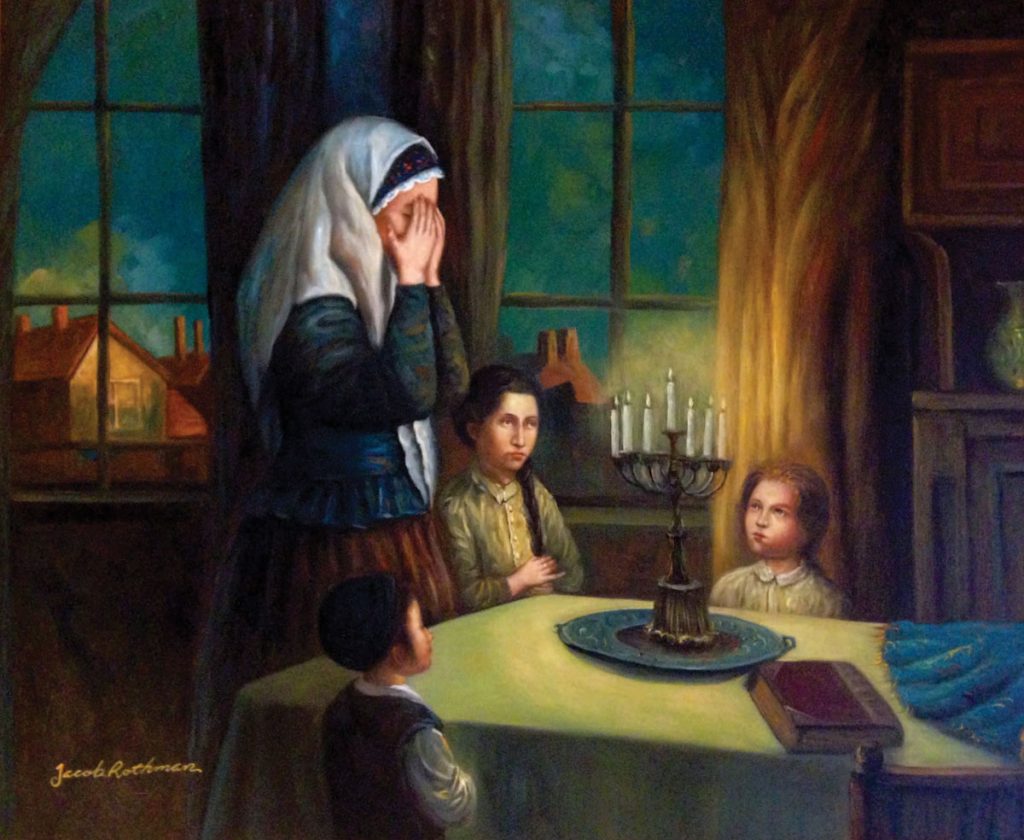
As among ethnic Ukrainians, traditional Jewish culture was built around sacred time, although for Jews the separation between secular and holy time was more pronounced. The most obvious example is the Sabbath (Heb.: shabbat; Yid.: shabes). It starts on Friday with the lighting and blessing of the candles before sunset, a ritual that signals the arrival of the sanctified time of Sabbath. The Sabbath ends on Saturday night roughly an hour after sunset, the moment when three stars can be seen in the night sky and when the ritual havdalah (separating) blessing is recited over a multi-wick candle, a container of spices, and a cup of wine. From then on, sacred time ends and the secular begins.
For observant Jews, the approximately twenty-five hours of the Sabbath is a utopian island of peace, rest, joy, and harmony in the otherwise rough and stormy ocean of secular time with its everyday vicissitudes and daily turmoil. In essence, the Sabbath is an opportunity to look at and evaluate one's deeds from the perspective of eternity. It is like a period at the end of a sentence, without which the sentence would not make sense. In sixteenth- to nineteenth-century Ukraine, traditional Ashkenazi Jews ate three meals (with challah bread) during the Sabbath which were known as the seudos. A Jew said the blessing over grape juice or wine, a ritual known as the wine sanctification, pronounced twice on the Sabbath. It was this ritual that inspired the act of communion among Christians and the idea of transubstantiation of bread and wine into the salvific body and the blood of Jesus.
On Saturday morning Jews hear a reading of one of the fifty-four portions of the Torah (Pentateuch) parchment scroll in the synagogue, listen to a sermon by a preacher or a rabbi, engage in group study of commentaries to Judaic sacred texts and legal and ethical works, and then spend time with family and children. Since the Sabbath is sacred time, traditional Judaism prohibits all work-related and secular activities — driving a car, switching lights off and on, watching television, using a computer or a telephone, shopping and preparing food (which has to be fully ready before Friday night), and even talking about money and future plans. Talking about mundane things and making plans does not really help one to participate, as one should think one is doing, in fostering the coming of Messiah! If, however, there is a threat to human life, all prohibitions are lifted, because saving a life is more important than observing the Sabbath.
As the Sabbath creates a rhythm for the week, so do holidays shape the year. Judaic holidays re-enact the most important moments in Jewish history. Combining solar and lunar cycles, the Judaic calendar starts on the first day of the month of Tishrei, usually in September, with the rosh ha-shanah (New Year). During this two-day holiday, Jews acknowledge God as their absolute monarch and supreme judge, hoping that in recompense He will mercifully evaluate their doings. The short and then prolonged sounds of the shofar, the ram's horn, remind Jews of the binding of Isaac, the revelation of God on Mount Sinai, and the necessity to repent before the judge to achieve redemption. As God had mercy on Isaac, may He also be merciful toward a praying Jew!
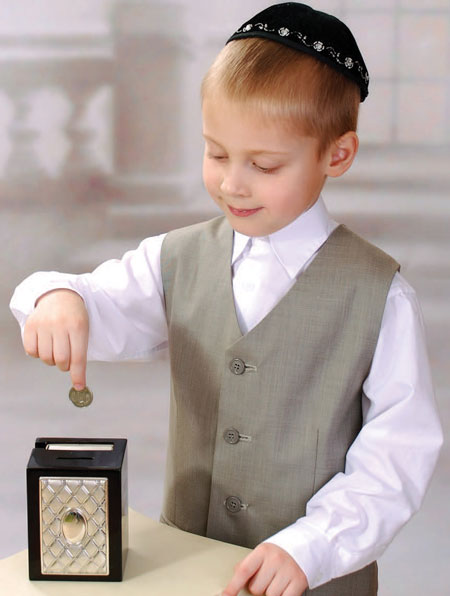
This intense holiday of introspection is followed by ten days of repentance culminating in Yom Kippur (the Day of Atonement), a twenty-six-hour-long dry fast. The tradition allows the congregation to pray with the most wanton sinners who attend services, purifying themselves as a community and asking for forgiveness for all sins, misdeeds, and violations of the divine law committed over the past year. The tradition also requires that in case of a sin committed against another person, forgiveness should be sought directly from that person. Jews believe that "prayer, philanthropy, and repentance" properly performed can cancel the divine decree and guarantee forgiveness, hence life.
Once Yom Kippur is over and one's fate for the coming year is sealed, one should not think that one is entirely forgiven and metaphysically protected. Four days later, Sukkot (kushchi in Eastern Christian tradition) begins. This is a seven-day-long celebration (eight among diasporan Jews), during which male Jews are required to eat, study, and sleep in a hand-made booth with shaky walls and a straw roof symbolizing that only the Almighty protects the Jews, not a tiled roof and brick walls.
On these days, Jews go to the synagogue with four species of plant in hand, including a palm branch. They wave the plants and sing solemn hymns (among them Hoshanah — save us!), as they did, the Gospels claim, on that celebratory day when Jesus arrived in Jerusalem. This celebration emphasizes not only (one hopes) the successful results of the agricultural year, but also the volatile situation of the Jews in the desert where they lived in booth-like shacks on their way from Egypt to the Holy Land. Sukkot ends with the Simchat Torah (Yid.: Simkhes toyre) festivities, a joyous celebration concluding the annual cycle of the Torah scroll reading. Jews dance with the Torah scrolls in the synagogues as if they, the Jewish people, represent a groom and the Torah is the bride to which they are now again happily wedded. Once the reading is finished, the congregation immediately opens the Torah to the beginning and starts reading again. Learning and reading are ultimately an uninterrupted process.
There are several holidays during which work is permitted. On Kislev 25 (in late November or December), Jews celebrate Hanukah. This is the holiday of lights, which commemorates the military victory of the Maccabees over the assimilationist Hellenizers in 164 BCE. The victory resulted in the purification and rededication of the Second Temple. On this day the eight-branch candelabra (hanukiyah) with its olive oil and wicks or candles is placed in one's window to show to the world the miracle that happened to the Jews on that day. In the synagogue, Jews read an excerpt from the Torah about the Temple's seven-branch candelabra. At home, families eat deep-fried donuts, play with a four-sided spinning top called a dreidl, and give sweets and money (Yid.: Hanukah gelt) to children, who re-enact in theatrical-like performances the battles of the Maccabees for the preservation of Judaic tradition.
While Hanukah commemorates spiritual redemption, the next holiday, Purim (in late February or in March), signifies physical redemption. Purim is built around the reading of the biblical Book of Esther, which relates the story of persecution of Jews in the Persian diaspora, the concealed presence of God in the unfolding events, and the leading role played by Queen Esther in saving the Jewish people from total destruction. On that day, Jews hold a festive dinner, send food and gifts to friends, and distribute food among the poor. Jews also engage in comical plays usually performed by children about the events related in the Book of Esther that also include references to the current-day political situation.
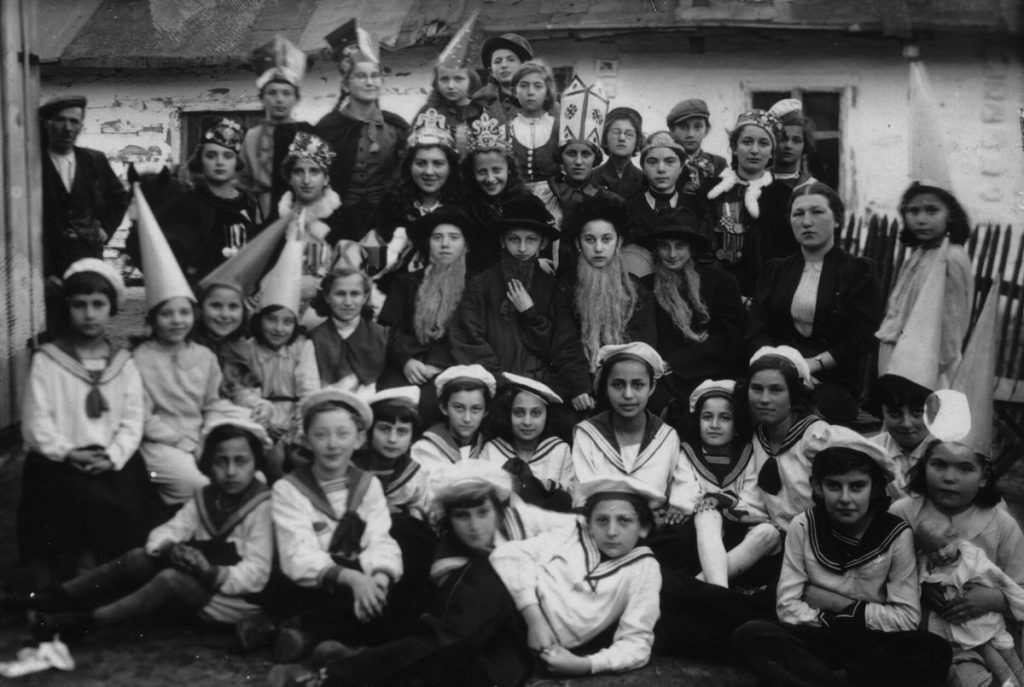
One month later, on Nissan 14, is Passover (Easter among Christians), a holiday of national redemption marking the time when God brought the Jews out of Egypt. This holiday requires cleaning the entire house of all leavened bread and products, which are forbidden for the next seven (in diaspora, eight) days of the holiday. Instead, Jews consume matzo made of unleavened flour, symbolizing the bread of affliction and redemption. The focus on Passover is reading portions of the Book of Exodus in the synagogue and the Haggadah (literally: story), a compilation of rabbinic origin. Telling the story of national redemption is part of a family-based ritual that happens around a lavishly set table. A special Passover plate lies at the center of the table with various types of food that symbolize Jewish suffering in Egypt and the redemptive Passover offering through which the Jews freed themselves from bondage. Family members participate in singing Passover songs and telling stories derived from the Haggadah, underscoring the collective nature of the redemptive process. Fifty days after Passover, that is, after coming out of Egypt (1314 BCE, according to some rabbinical calculations), Jews celebrate Shavuot (Pentecost among Christians). This is the day when God gave Jews the Tablets with the Ten Commandments (Heb.: lukhot; Yid.: lukhos), traditionally considered the basis for the entire Oral and Written Law, or the Torah broadly conceived. On the eve of Shavuot, some Jewish men begin by studying Judaic texts and continue through the night. In the morning during synagogue services they read excerpts of the Torah relating God's revelation to Moses on Mount Sinai. On that day (two days in the diaspora), Jews eat dairy products, which symbolize the nurturing relations between the Torah and the Jewish people. Together with Sukkot and Pesakh, Shavuot was in antiquity one of the three holidays of pilgrimage, when male Jews were obligated to travel to Jerusalem and go to the Temple where, they believed, God dwelled.
In addition to the holidays with dramatic meanings, there are also very tragic days marked by fasts. For example, full dry fasts of the Seventeenth of Tammuz and the Ninth of Av commemorate respectively the breaching of the walls of Jerusalem and the destruction of the Second Temple by the Roman armies in 69–70 CE. The second fast is the most tragic day of the Jewish calendar, marked by a reading of the biblical Lamentation of Jeremiah (Megilat Eikha) and the recitation of lengthy medieval dirges (kinnot).
Jewish traditional culture, like that of ethnic Ukrainians, also contains life-cycle celebrations. The most important of these are: (1) circumcision or brit milah (replaced by Jesus' Epiphany among Christians), usually performed in the synagogue on the eighth day after the birth of a baby boy and followed by a festive meal; and (2) the bar mitzvah, when a Jewish boy becomes an adult and has to recite a portion of the Torah scroll. In the twentieth century, with the rise of liberal movements in Judaism, the celebration of the bat mitzvah (girl's confirmation) is performed in a similar fashion in non-Orthodox Jewish communities.
The wedding (Heb.: hatunah, Yid.: hasene) is the pinnacle of joyous celebration in Judaism. A new Jewish couple is considered a self-contained "house," a vessel of a tradition in which the wife is the pillar. The wedding ritual proves that for Jews there can never be excessive or unrestricted joy. In the midst of this communal and family celebration, the groom breaks a glass under the wedding canopy in commemoration of the destroyed Temple which the new family, through its good deeds and performance of the commandments, will attempt to rebuild.
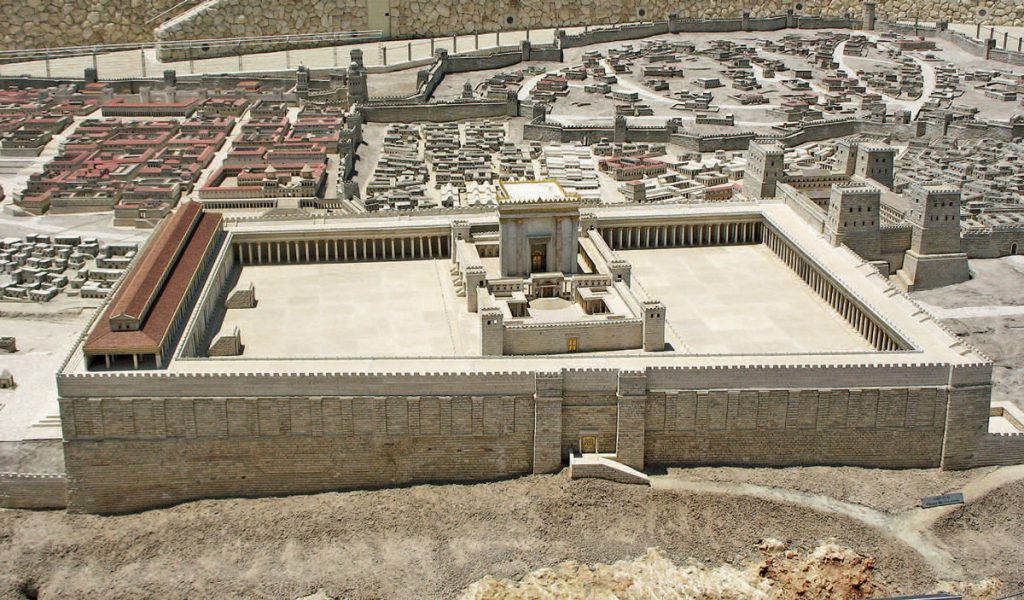
Death and funerals (levayah) are the most tragic moments in the life cycle. Jews make a considerable effort to bury their dead by the beginning of the next day. Funerals are followed by seven days of morning or shivah, during which the closest relatives spend time together in the house of the deceased. They do not attend synagogue but instead participate in communal home-based prayer. Most important, the son of the deceased starts reciting daily, for several months, the Aramaic mourners' prayer or kaddish, which sanctifies God's name and helps the next generation connect to the memory of the deceased.
The celebration of traditional holidays differs among different Jewish religious orientations. For example, Orthodox Jews of all denominations — Mizrahi, Modern Orthodox, Sephardim, Litvak (Heb.: Mitnagdim; Yid.: Misnagdim), and Hasidim — are particularly strict regarding the Sabbath and holiday observance. In rather stark contrast, Reform, Conservative, Reconstructionist, Egalitarian, and Progressive Jews follow a wide range of innovative patterns of observance. Some drive to synagogue on the Sabbath; recite prayers on the Day of Atonement to the accompaniment of an electronic organ; abandon the dietary laws; and celebrate only one day of the main holidays. Others may observe some dietary laws but do not follow the rabbinic authorities as far as holiday restrictions are concerned. This multiplicity of seemingly incompatible Judaisms generated a joke in which a Jew who found himself on a desert island prays to God asking for only one thing to be built for him there: two synagogues. But why do you need two synagogues on an uninhabited island, wonders the Almighty. You do not understand, responds the Jew: I will pray in one, but the other I won't set foot in!
Politics and traditional culture
In most societies, the so-called modernization processes of industrialization and urbanization have resulted in the gradual undermining and eventual disappearance of cottage-industry handicrafts, home-made products for individual consumption, and many rites, customs, and beliefs associated primarily with rural life. In the case of Ukraine, these natural evolutionary changes were at times accelerated by the intervention of the state. Such intervention could be passive or active.
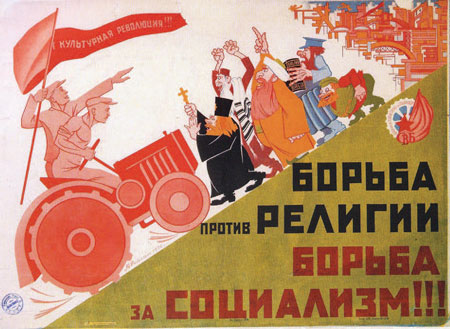
For example, in those countries where ethnic Ukrainians lived but which functioned according to the Western calendar, traditional old-calendar religious and secular rites and traditions were under pressure to adapt to the norms of the larger society. This applied, for instance, to the western Ukrainian province of Galicia, ruled during the interwar years by Roman Catholic Poland, and to ethnic-Ukrainian diaspora communities in North America, South America, and most European countries. Whereas ethnic Ukrainian rural dwellers in those countries were "left to do things the way they always did," it became increasingly difficult for urban dwellers to get off work, for example, on Eastern Christmas (6 and 7 January), which are otherwise normal work days for the rest of society which already finished its Christmas holiday two weeks earlier. At the very least, the length of traditional holidays in diaspora communities would have to be curtailed to one day. This new reality applied not only to diaspora Ukrainians but to Jews as well. For instance, some Eastern-rite churches resolved for practical reasons to adopt the Western calendar, while all Reform synagogues reduced Jewish holidays to a one-day celebration.
More active intervention — one might say assault — on traditional culture was carried out by the authorities in Soviet Ukraine. The Soviet state was governed by the materialistic ideology of atheism; its basic goal was to build a new society inhabited by Soviet men and women who, the authorities and their ideologues argued, would be liberated from the allegedly backward world outlook and spiritual heritage of the past. In keeping with these principles and goals, the state was opposed to religion and all other superstitions, whether or not they had any relationship with Christianity or Judaism.
Christian religious holidays were simply banned and turned into workdays, like any others. Processions and religious manifestations in public — all of which had become an integral element in ethnic Ukrainian traditional culture — were also banned. In their stead, new holidays commemorating events in recent Soviet history or the birthdays of important leaders, in particular Lenin and Stalin, were instituted. Other existing holidays were enhanced, and given a purely secular look, in particular 1 January, with its New Year's tree in place of a Christmas tree and honour given to Father Frost (Did Moroz) instead of to baby Jesus. In the end, Soviet holidays were not all that new, since traditional forms of celebration — veneration of iconic images of Communist leaders, excessive eating and drinking parties, collective singing — remained firmly in place although bereft of Christian symbolism. '
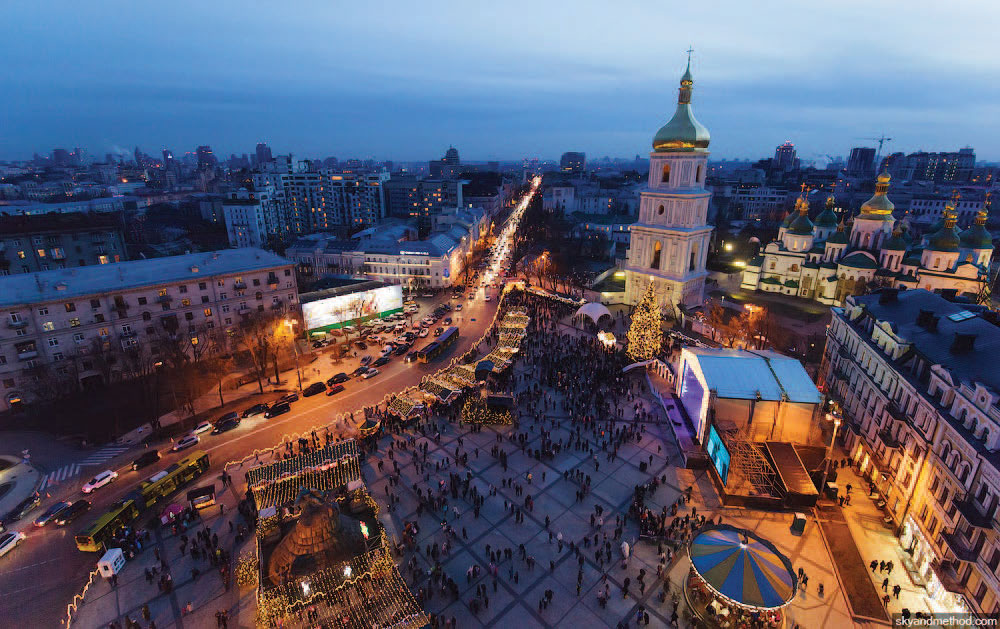
Customs and rites surrounding the three basic phases of the life cycle were also undermined. Baptism was considered undesirable, especially for children of Communist party members and for anyone who hoped to function and rise through the ranks of the Soviet administration and of state-owned workplaces. It was not uncommon for the traditionally minded to baptize their newborn offspring in secret, usually in a neighboring village or town where no one knew them, and certainly without the elaborate celebratory and festive events that were typical of pre-Soviet times. The Soviet regime tried to reduce the lure of church marriage ceremonies by enhancing the settings of state-sponsored civil-marriage registry offices. These efforts proved unsatisfactory, so that eventually traditional folk wedding customs were revived and performed either before or after the civil ceremony, although without any noticeable religious elements. Finally, funerals were celebrated in communal halls, often without any religious figure present, while frequently the bodies of former Communists and other functionaries of the system were cremated, a practice generally frowned upon by the church as pagan and atavistic.
The Soviet regime was particularly set on destroying entrenched traditional cultural values in the western lands it annexed to Ukraine at the close of World War II. Aside from implementing the changes noted above, it abolished entirely the Greek Catholic Church in Galicia (1946) and Transcarpathia (1949). This proved to be an important step in eliminating an institution that not only was a carrier of religious values but also had come to be associated with traditional Ukrainian cultural and national ideals that needed to be purged before the new Soviet man and woman could come into being.
During the late 1980s, and certainly since the establishment of a post-Communist independent Ukrainian state, many aspects of traditional ethnic Ukrainian culture, both Christian and non-Christian, have been revived. The main Christian celebrations — Christmas and Easter — have been restored as state holidays, each lasting more than one day. As paid holidays, Ukraine's citizens at the very least welcome the return of Christmas (with New Year's soon after) and Easter as mid-winter and spring mini-vacations.
Another reason for the successful revival of traditional rites and customs is the fact that they are considered to be a mark of ethnic Ukrainian patriotism and pride on the part of those who partake in them. Since, however, the majority of ethnic Ukrainians now live in urban areas, the rites and customs are divorced from their function in the original rural agricultural setting. Instead, they take on aspects of a somewhat superficial performance exercise linked to a nostalgic longing for a no longer existing, but imagined as genuine, Ukrainian past.
Jewish traditional culture also underwent a significant transformation once Ukrainian lands came under Soviet rule. By the end of the 1920s, the authorities had shut down hundreds of synagogues, then reopened them as socialist Yiddish youth clubs or sports centers, and eventually shut those secular Jewish centers as well. For example, the synagogue in Sharhorod was used as a warehouse for wine and juice containers, while the synagogues in Uman, Hulyaipole, and Kyiv (the Brodsky synagogue) became, respectively, a mechanical shop for a tractor garage, a local hospital, and a puppet-theater. Many others were either levelled or entirely rebuilt for more mundane purposes. All synagogue property was confiscated and the proceeds (like the silver and gold from Christian churches) were sent to the West in exchange for hard currency to fund Soviet collectivization and industrialization programs. Hundreds of Torah scrolls were also confiscated, although not destroyed, and placed under lock and key at various archival depositories.
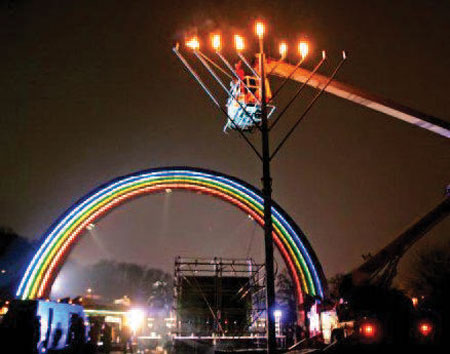
Those Jewish religious communities that remained were forced to operate under the strict supervision of Soviet state security. Religious communities not authorized by the state were abolished, since they were viewed as attempts to spread religious propaganda, conserve bourgeois-nationalist ideology, and therefore undermine the socialist ideals of Soviet society. Judaism survived underground only in the form of some rudimentary family traditions, such as fasting on Yom Kippur, eating matzo on Passover, giving money to children on Hanukah, and, most important of all, cooking traditional Jewish foods — although with non-kosher ingredients. By the second half of the twentieth century, there was only one official matzo bakery for all 500,000 Jews of Ukraine. Moreover, the local authorities in Kyiv made sure they had copies of the lists of Jews who requested matzo. When, out of curiosity, two Kyiv-based journalists decided to purchase some matzo early in the 1960s, both of them (one an ethnic Ukrainian, the other a Jew) lost their jobs. Despite such restrictions, there were still several butchers (shokhtim) preparing kosher meat as late as the 1970s, well before the religious revival of the post-1985 Gorbachev period.
Following the collapse of the Soviet Union in 1991, the Jews of Ukraine experienced a revival of traditional culture. In a sense, the revival was really more of a reinvention, since most rituals during seventy years of the Soviet regime had been suppressed and the meaning of the rituals lost. Until then, only the most dedicated Jews — quite often, women — went to a synagogue for Yom Kippur prayers. They did so while being well aware that their attendance was under secret police surveillance and could have negative ramifications on their careers. Nowadays, in post-Communist Ukraine, several dozen newly established communities help young and old to rediscover the meaning of Jewish traditions and collectively participate in and learn about observing religious rituals. Public celebrations of Hanukah, Purim, and Passover in cultural centers outside of synagogues attract media, professional actors, and pop-culture performers. As a result, Jewish tradition has become much more visible on Ukraine's cultural scene and is now an essential element in the formation of a new generation of Ukrainian Jews.
Click here for a pdf of the entire book.







